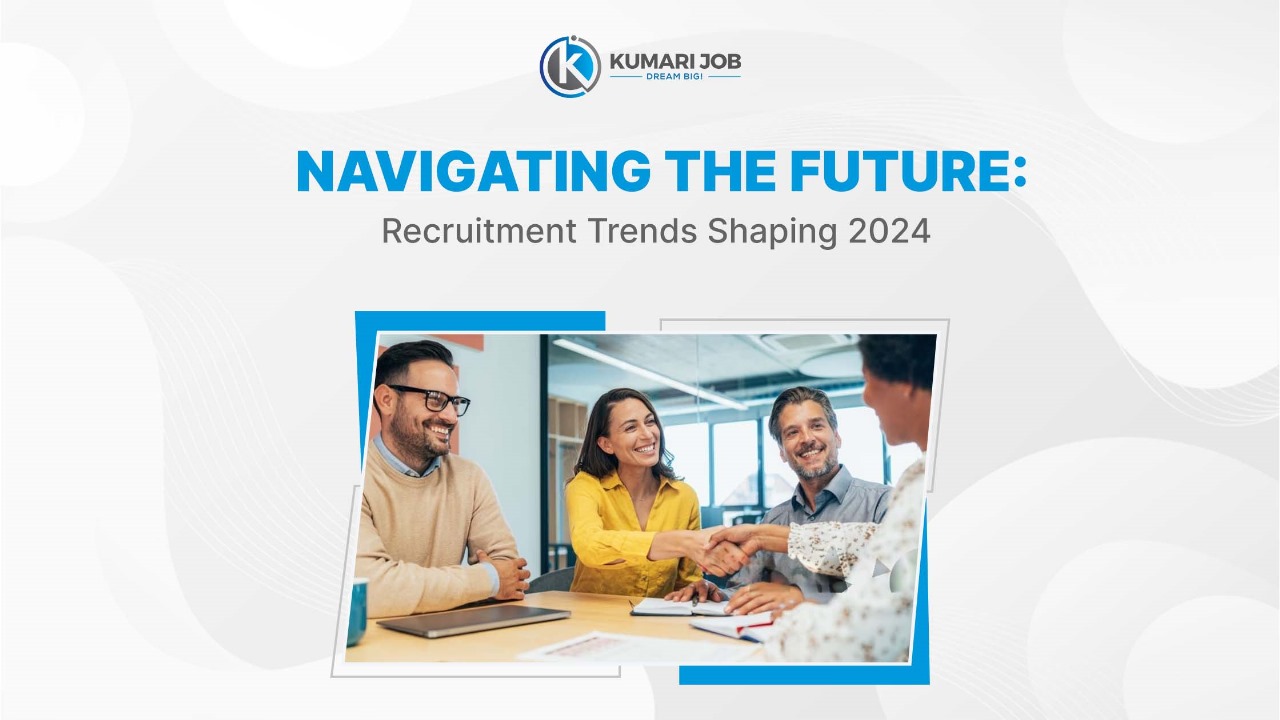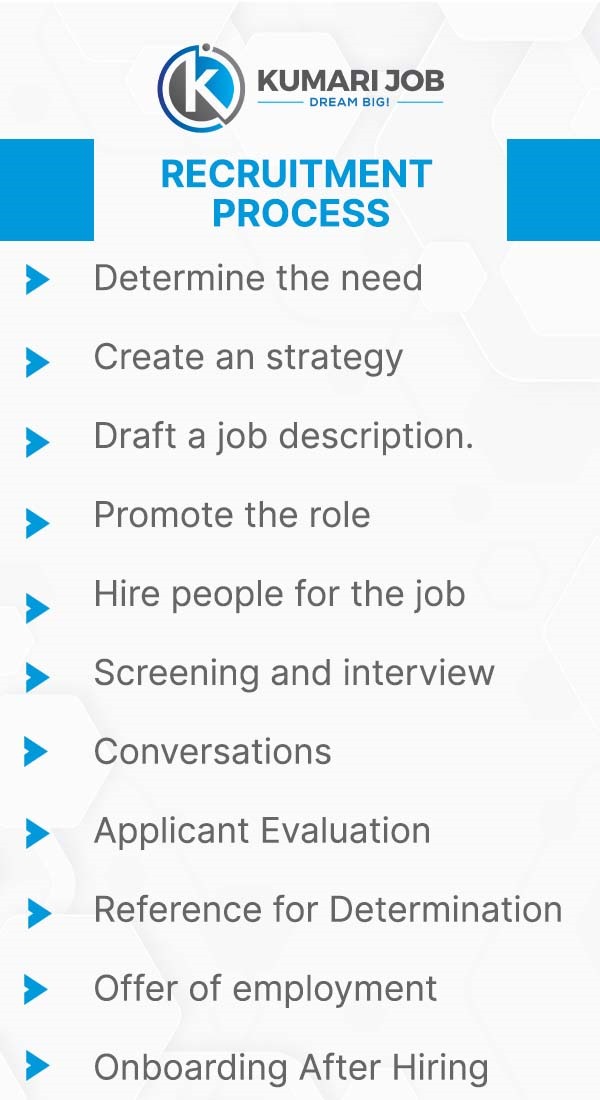
What is recruitment?
Recruitment refers to the process of identifying, attracting, interviewing, selecting, hiring, and onboarding employees. In other words, it involves everything from the identification of a staffing need to filling it. Recruitment is the process of finding, screening, hiring, and eventually onboarding qualified job candidates. The recruiting process can be relatively straightforward, but advances in technology, a tight labor market, and a workforce pool that might span five generations can make the first step -- finding potential candidates -- particularly challenging. Recruitment is a key part of human resource (HR) management and is supported by the hiring manager and others involved in the hiring process. Skilled recruitment efforts will make a company stand out and be more attractive to potential employees, a strategy that can directly impact a company's bottom line.
Recruitment is a crucial aspect of an organization's operations, involving various workers and teams. Larger organizations may have entire teams, while smaller ones may have hiring managers. Many organizations outsource recruitment to external firms, using various methods like advertisements, job boards, and social media. Recruiting often works alongside or as part of human resources.
In this blog
What is recruiting in HRM?
Human resource management, or HR for short, is the department that oversees people inside an organization. With an emphasis on people as the company's most valuable asset, HR is in charge of efficiently managing human capital to support the organization's overarching goals. Building an organization's human capital begins with recruitment. Finding and hiring the best people on time and within budget are the main objectives.
What does recruitment involve?
There are 11 crucial milestones in the hiring process, even if every organization's recruitment procedure is different.
- Determine the need for recruiting
- Create an employment strategy.
- Draft a job description.
- Promote the role
- Hire people for the job
- Examine applications by phone First screening and interview
- Conversations
- Applicant Evaluation Background Verification
- Reference for Determination Verify
- Offer of employment
- Onboarding After Hiring
Read more about Human Resource Planning :https://www.kumarijob.com/blog/career-tips/human-resource-planning
Types of Recruiting
There are several types of recruiting. Here’s an overview:
- Internal Recruiting: Internal recruiting involves filling vacancies with existing employees from within an organization.
- Retained Recruiting: When an organisation hires a recruiting firm, there are several ways to do so; retained recruiting is a common one. When an organization retains a recruiting firm to fill a vacancy, it pays an upfront fee to fill the position. The firm is responsible for finding candidates until the position is filled. The organization also agrees to work exclusively with the firm. Companies cannot, in other words, hire multiple recruiting firms to fill the same position.
- Contingency recruiting: like retained recruiting, contingency recruiting requires an outside firm. Unlike retained recruiting, there is no upfront fee with contingency. Instead, the recruitment company receives payment only when the clients they represent are hired by an organization.
- Staffing Recruiting: Staffing recruiters work for staffing agencies. Staffing recruiting matches qualified applicants with qualified job openings. Moreover, staffing agencies typically focus on short-term or temporary employment positions.
- Outplacement Recruiting: Outplacement is typically an employer-sponsored benefit that helps former employees transition into new jobs. Outplacement recruiting is designed to provide displaced employees with the resources to find new positions or careers.
- Reverse recruiting: Reverse recruiting refers to the process whereby an employee is encouraged to seek employment with a different organization that offers a better fit for their skill set. We offer Reverse Recruiting Days to help workers with this process. At our Reverse Recruiting Days, we review resumes, conduct mock interviews, and offer deep dives into specific job roles.
Tips for Effective Recruiting
Hiring is a complex process that requires careful planning, meticulous execution, and tact to consistently yield excellent candidates. In light of this, the following are our top three suggestions for successful hiring:
- Consider internal candidates for your position, as they are already familiar with and contributing to your company's culture and goals, and their past success within the organization suggests they will continue to excel in a new role.
- To effectively recruit, consider reaching out to passive candidates who may not be actively seeking a new job. Encourage staff to attend industry conferences, participate in professional organizations, develop relationships with local universities, search social media for resumes, and encourage employees to refer people they know or are connected to.
- Authors and experts suggest hiring an industry-excellent individual, as past success is the most reliable indicator of future success.
Read more about recruitment: https://www.kumarijob.com/blog/career-tips/recruitment
The emerging trends and technologies influencing the recruitment landscape
Advancements in technology are transforming recruitment methods, leading to innovative techniques like AI, gamification, predictive analysis, and employee referral programs. To remain competitive and attract top talent, businesses must stay updated with the latest trends and technologies, focusing on staying ahead of the curve and utilizing innovative methods beyond traditional methods.
- Artificial Intelligence
AI is believed to assist HR professionals in candidate application processes, with 65% of recruiters already using AI in hiring. AI systems help recruiters quickly sort resumes and find the best matches, even identifying potential candidates who may not be actively seeking jobs. This innovative method saves time and money for companies.
- Referral programs
A referral program is a powerful tool for companies to quickly find new team members and expedite hiring. Employees often recommend top talent within their network, allowing companies to access a larger pool of potential hires. Extending the program to external professionals can diversify the team. Bountiful offers internal management and external scaling, allowing companies to leverage their network of community scouts.
- Virtual and augmented reality
Companies like Walmart, Bank of America, FedEx, JetBlue, and Verizon are using VR and AR technology to provide virtual office tours and simulate job scenarios. These technologies not only provide a realistic preview of the workplace culture but also allow candidates to complete simulated tasks to assess their competencies. Researchers predict that these technologies will improve 23 million jobs by 2030.
- Social media recruiting
Social media has become a popular hiring platform for companies, with recruiters using platforms like LinkedIn and Twitter to reach potential employees directly and share job openings. With 79% of job seekers using social media, employers can use it for branding, and showcasing company culture, values, and work environment. Posting employee testimonials, behind-the-scenes clips, and company events can also attract potential candidates.
- Gamification in recruitment
Gamification is a recruiting approach that uses interactive challenges or quizzes to test candidates' skills and abilities. Google was an early adopter, inviting people to solve equations in 2004. Today, gamification is common in organizations like Headspace, KFC, M&Ms, Starbucks, Nike, and Duolingo, ensuring that those who are intelligent and driven are excellent candidates.
- Candidate experience
Improving the candidate experience is crucial in today's job market, as top talent is selective. A CareerPlug survey found that 49% of job seekers rejected offers due to a bad hiring process. A positive experience during the application and interviewing process creates a positive impression of the company, which can be shared with friends, promoting other open roles, and leveraging referrals to attract top talent.
- Decline in the Hybrid Work Model in 2024
The once-surging popularity of flexible working is now showing signs of waning in 2024. After a post-COVID-19 surge, recent data suggests modest growth, leading major companies like Google, Apple, and Meta to recall employees to the office. The impending UK legislation adds complexity to the narrative, raising questions about the sustainability of flexible work arrangements
. - Proactive Candidate Engagement
Proactively engaging candidates is no longer confined to C-suite executive vacancies. According to a LinkedIn survey, 84% of recruiters now emphasize the importance of engaging passive candidates, even in lower and middle-level roles.
- Rise of Recruiting Automation
Rise of Recruiting Automation2024 is expected to witness a surge in recruiting and staffing firms embracing automation to streamline repetitive tasks. Investing in advanced recruiting tools and technology is deemed essential for improving recruiter performance, with solutions like RecruiterFlow leading the way.
- Focus on Diversity and Inclusion
While global business leaders acknowledge the benefits of a culturally diverse workforce, there's a noticeable shift in 2024 towards increased tracking of diversity metrics. With candidates placing greater importance on diversity and inclusion efforts, recruiters are urged to deploy innovative tools to eliminate bias in hiring processes
- Emphasis on Branding
Employer branding takes center stage in 2024, with companies expected to position themselves as entities prioritizing the well-being and development of their recruiters and employees. This shift is driven by the expectation that potential recruiters will seek workplaces that prioritize their overall well-being
- Data-Centric Recruiting
The use of data in recruiting is evolving beyond traditional metrics. While tactical metrics remain important, the focus in 2024 is on strategic metrics that measure the business outcomes of the recruitment team's efforts.
- Gen Z Entering the Workforce
Gen Z's entry into the workforce brings a demand for virtual and fast-paced processes. Outdated recruitment methods won't suffice, necessitating the adoption of recruitment automation, mobile-optimized application processes, and continuous candidate engagement.
- Transformation of Recruiters into Business Leaders
Recruiters are transitioning into strategic roles resembling HR business partners. This shift emphasizes aligning with client business goals, advising on talent strategy, and leading the way forward, moving away from the traditional perception of recruiters as mere order-takers.
- Gig Work and Gig Economy
The gig economy's continued growth prompts a shift in how companies approach recruitment and talent acquisition. Flexibility and project-based work become increasingly important in the evolving job market.
- Pay Transparency
The persistent issue of the gender pay gap drives an increased focus on pay transparency. Several countries have implemented legislation, making it crucial for recruiters to comply and promote gender-neutral pay.
- Concerns about Recession
Economic indicators suggest a potential decline, prompting recruitment businesses to strategize for reduced hiring demand, possible hiring freezes, increased talent competition, and navigating through economic uncertainty.
- The Great Resignation Persists
The Great Resignation trend shows no signs of slowing down, with more workers seeking better-paying jobs. This poses implications for staffing and recruiting agencies, necessitating refined sourcing strategies and enhanced matching capabilities.
- Preparing the Workforce for Generative AI and Automation
The transformative impact of generative AI and automation underscores the need for reskilling programs. Recruitment strategies will adapt to seek candidates with a blend of technical and soft skills, facilitating effective collaboration with AI systems.
- Shift from the Candidate-Driven Market to the Employer-Employee Driven Market
A paradigm shift in the employer-employee relationship reflects increased bargaining power for both parties. Retention becomes paramount, with employers focusing on flexible work options, raises, bonuses, benefits, and training.
Conclusion
In 2024, recruitment is undergoing significant changes due to technological advancements and workforce dynamics. Artificial intelligence, virtual reality, and automation are revolutionizing recruitment, while Generation Z demands mobile-friendly platforms and continuous candidate engagement. The gig economy and the Great Resignation Trend highlight the need for agility and creativity in talent sourcing and retention. The recruitment landscape will continue to evolve due to technological advancements, demographic shifts, and economic factors. Success requires a proactive approach, data-driven insights, strong employer-employee relationships, and prioritizing the well-being of recruiters and employees. Organizations that embrace change, invest in innovation, and prioritize diversity, inclusion, and employee satisfaction will be best positioned to thrive in the evolving recruitment landscape of 2024 and beyond.
Frequently Asked Questions
HR recruiters find the appropriate prospects for job openings within a company. They are responsible for designing recruitment plans, advertising needed positions, and interviewing applicants.
To become a recruiter for a company, start by earning a degree in human resources, business, or a related field. Gain relevant experience through internships or entry-level HR positions. Develop strong communication and interpersonal skills.
Human Resource Planning also contributes to the development of strategic recruitment plans. Armed with a clear understanding of the organization's long-term goals and workforce requirements, HR professionals can design recruitment strategies that align with these objectives.
Talent acquisition is an ongoing strategy to find your company's top specialists, individual contributors, leaders, or future executives. Recruitment refers to the process of identifying, attracting, and hiring individuals for an open position within a short period.









Loading Comments...